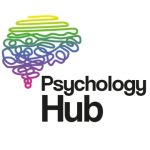
Learning Theory (Explanations Of Attachment Formation)
June 5, 2021 - Paper 1 Introductory Topics in Psychology | Attachment
There are two main explanations of attachment formation; the Learning Theory of attachment which states that all attachments are learned and, the Evolutionary Explanation of Attachment which states that all attachments are formed on the basis of a genetic, innate process.
Explanations Of Attachment The Learning Theory, (AO1, Description):
Learning Theory of Attachment’ The Behavioural Explanation: Miller and Dollard (1950)(Remember Learning Theory can also be referred to as the Behavioural Explanation in the exam).
Learning theory suggests that all infants are born as ‘blank slates’ and that ALL behaviour is ‘learned’ rather than innate. In other words, attachment is a result of nurture rather than nature. This theory is often referred to as a ‘cupboard love theory’ because it suggests that the infant becomes attached to a caregiver because it ‘learns’ that the caregiver will meet their physiological (nutritional) needs (i.e. becomes attached to the care giver who provides the infant with food). Behaviourists suggest that attachment is learned by classical conditioning (learning by association).
Classical conditioning suggests that a child learns to associate their caregiver with their needs being met (feeding them) and so an attachment is formed. The stimulus of food produces pleasure (an unconditioned stimulus which produces an unconditioned response). The person providing the food (usually the mother) becomes associated with this pleasure and therefore becomes a conditioned stimulus. Over time, as an association is formed, the food-giver becomes a source of pleasure regardless of whether they provide food or not.
Definition of Classical Conditioning: Ivan Pavlov was the first Psychologist to describe learning through (classical) conditioning. The main assumption is that behaviour is learnt through association (for example, we learn to respond to new events and people in the same way as we already respond to other events). Look at the classical conditioning schedule below to see how attachment behaviour is learned
For more information on the Behavioural Approach within Psychology click here -> Learning Approaches: the Behaviourist Approach
Evaluation Of Explanations Of Attachment The Learning Theory, (AO3, Evaluation):
Strengths:
(1) POINT: Learning theory can provide an adequate explanation of how attachments form. EVIDENCE/EXAMPLE: For example, we do seem to learn in a number of ways through association in real-life (e.g. we associate certain situations with danger when we develop phobias even if that association is irrational). The case of Little Albert shows that classical conditioning is the process by which we learn a variety of behaviours. Little Albert’s case shows that when you combine a loud noise (an unconditioned stimulus) with a neutral stimulus (a rat) after much repetition, this creates a conditioned response (fear of the rat).EVALUATION: This is positive because it suggests learning theory may at least play a part in attachment formation.
Weaknesses:
(1) POINT: There is strong evidence from Psychological studies that suggests that attachments that form between and infant and their primary caregiver are not based on feeding. EVIDENCE/EXAMPLE: For example, in Schaffer and Emerson’s (1964) study, the first attachments formed by 39% of babies was not to the person who carried out physical care, such as feeding and changing the babies nappy. Attachments were more likely to be formed to those individuals who are sensitive and rewarding to the baby and who play with the infant. This means that food may not be the main reinforcer of attachments (as argued by learning theory) but rather it could be the responsiveness from the caregiver that might also be rewarding. EVALUATION: This is a weakness as it goes against the Learning Theories assumption that infants are more likely to form attachments with adults who meet their physical needs.
(2) POINT: Evidence against learning theory comes from Harlow’s research (1959) EXAMPLE/EVIDENCE: He found that when newborn Rhesus monkeys were separated from their mother after birth and placed in a cage with 2 wire ‘mothers’ where one ‘mother’ consisted of exposed wire and a feeding bottle and the other ‘mother’ was wrapped in a soft cloth but offered no food, the monkey’s spent most of their time with the soft cloth ‘mother’ rather than the mother offering food. EVALUATION: This is a weakness because it suggests ‘cupboard love’ is unlikely to explain attachment as the monkeys should have attached to the mother with food but often will become attached to the caregiver offering comfort.
(3) POINT: Further evidence against learning theory comes from Lorenz’s theory of ‘imprinting’, EVIDENCE/EXAMPLE: Evidence to support this theory comes from Lorenz’s (1952) research using newly hatched Greylag geese who, after seeing Lorenz shortly after hatching (their first image), they followed him everywhere as he became their ‘imprinted’ parent. This means that newborns ‘imprint’ an image of the first moving object they see (usually their parents) within hours of being born which allows them to stick closely to this important source of protection and food. EVALUATE: This criticises learning theory as it suggests that attachment is innate as the infants were far too young to have learned anything at this stage.

